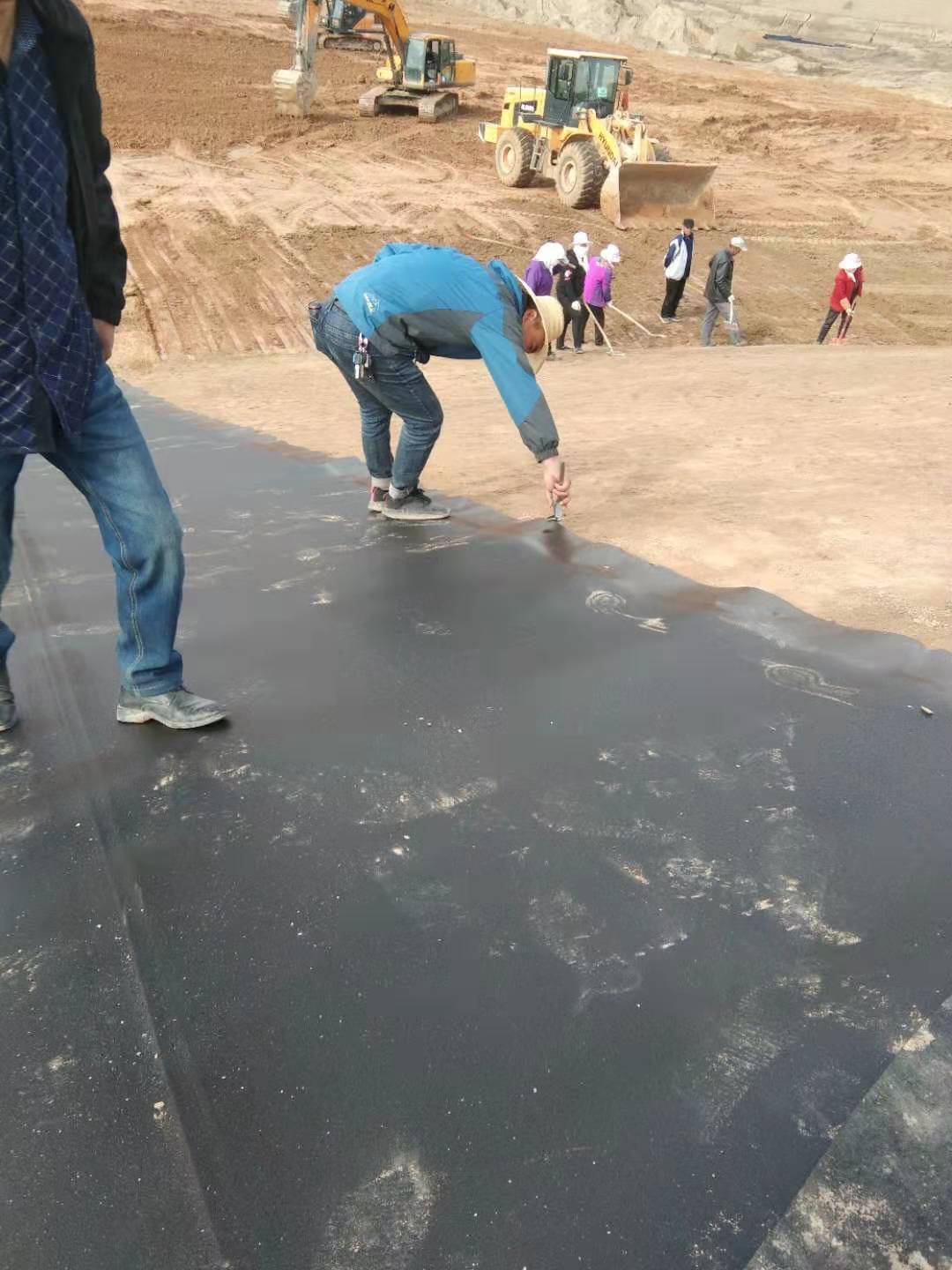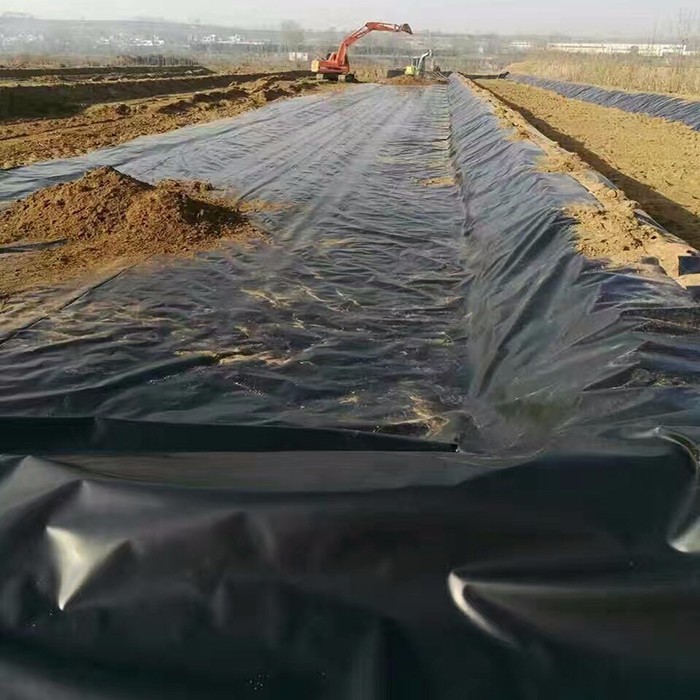How does geomembrane work?
Release time:
2024-06-09
geomembranes may be used in conjunction with geotextiles, geogrids, or clay liners to enhance overall performance. These layers work together to provide additional filtration,
Geomembranes are impermeable synthetic sheets made from materials such as polyethylene (HDPE, LLDPE), polyvinyl chloride (PVC), or rubber, designed to control and manage the movement of liquids and gases in various applications like landfills, ponds, canals, and mining operations. They essentially act as barriers to prevent seepage, contamination, or loss of fluids. Here's how geomembranes work:

1. Barrier Function: The primary function of a geomembrane is to act as a barrier layer, preventing water, chemicals, or other liquids from passing through it. This is achieved due to the low permeability of the materials they are made from, which makes them virtually impermeable to liquids and gases.
2. Flexible Sealing: Geomembranes are flexible, allowing them to conform to irregular surfaces and shapes. When installed correctly, with proper overlap and sealing at seams and edges, they create a continuous barrier that can effectively contain fluids within a designated area or prevent infiltration from outside.
3. Chemical Resistance: Many geomembranes are chemically resistant, meaning they can withstand exposure to a wide range of chemicals without degrading or losing their effectiveness. This is particularly important in applications where they may come into contact with harsh substances such as acids, alkalis, or solvents.

4. Stress and UV Resistance: High-quality geomembranes are designed to resist mechanical stress from soil pressure, installation tension, and weather conditions. They also often have UV stabilizers added to protect against degradation from sunlight exposure, ensuring long-term performance.
5. Seam Technology: Seams are a critical aspect of geomembrane installations. They are typically sealed using heat welding, chemical bonding, or mechanical methods to create a strong, leak-proof joint. Proper seam construction is essential to maintain the integrity of the barrier.
6. Compatibility and Layering: In complex projects, geomembranes may be used in conjunction with geotextiles, geogrids, or clay liners to enhance overall performance. These layers work together to provide additional filtration, reinforcement, or protection, ensuring a comprehensive solution tailored to the specific site requirements.
Overall, geomembranes are a crucial component in environmental containment and civil engineering projects, providing a reliable and durable method for controlling fluid migration and protecting the surrounding environment.
Latest News
Why Durable LLDPE Smooth Geomembranes Are Essential for Modern Construction
Why Durable LLDPE Smooth Geomembranes Are Essential for Modern Construction Table of Contents 1. Introduction to LLDPE Smooth Geomembranes 2. Importance of Durability in Construction Materials 3. What Are LLDPE Smooth Geomembranes? 4. Benefits of Using LLDPE Smooth Geomembranes 5. Applications of LLDPE Smooth Geomembranes in Construction 6. Installation Guidelines for
2025-12-27
Recommended waterproof geomembrane for tunnels
Tunnel waterproof geomembrane is a core material for ensuring the long-term stability of underground engineering projects. Selection must closely consider working conditions, performance suitability, and construction feasibility.The following are precise recommendations:
2025-12-26
Recommended geomembrane for fishpond aquaculture
In fishpond aquaculture, the effectiveness of seepage prevention directly impacts water quality stability and aquaculture profits, making the selection of a suitable geomembrane crucial. Currently, HDPE geomembrane is the preferred material for fishpond aquaculture due to its acid and alkali resistance, aging resistance, and strong seepage prevention properties, perfectly suited for the long-term immersion and complex water conditions of fishponds.
2025-12-25
The Essential Guide to Quality Green Geomembranes in Construction
In the realm of construction and civil engineering, the choice of materials can significantly impact the success and sustainability of a project. One such vital material is the quality green geomembrane, which plays an essential role in various applications, particularly in environmental protection and waste management. Quality green geomembranes are synthetic liners made from materials like high-
2025-12-24
Discover the Advantages of Using the Newest Smooth HDPE Geomembranes Table of Contents Introduction to Smooth HDPE Geomembranes What is HDPE? Advantages of Smooth HDPE Geomembranes 1. Exceptional Durability 2. Chemical Resistance 3. Enhanced Environmental Protection 4. Cost-Effectiveness 5. Ease of Installation
2025-12-21
Exploring the Benefits of Customized Textured HDPE Geomembranes in Construction
In the construction and decorative materials industry, particularly in the field of geosynthetics, customized textured HDPE (High-Density Polyethylene) geomembranes have gained significant attention for their unparalleled functionality and versatility. These geomembranes are specifically designed to meet the unique needs of various projects, offering tailored solutions that enhance performance and
2025-12-18




